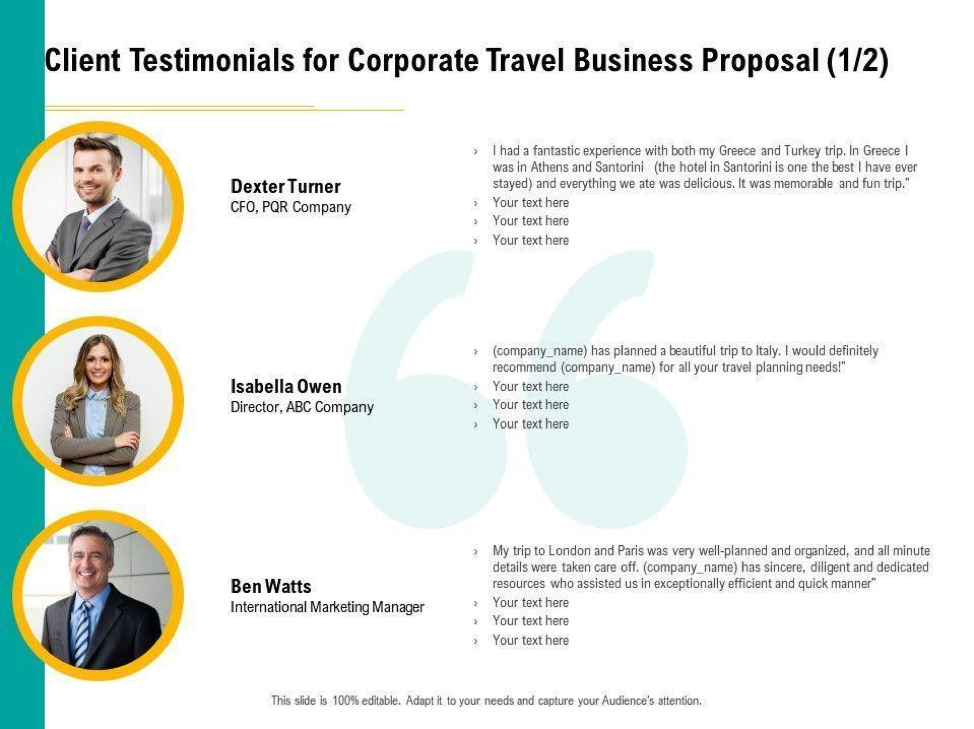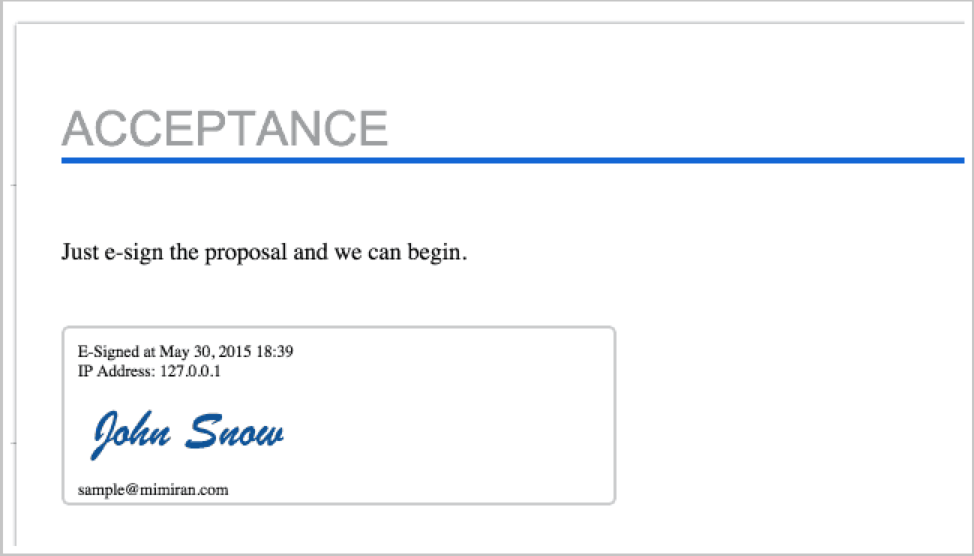How to Write More Powerful Business Proposals
If you’re looking to win new clients, a powerful business proposal can increase your chances. But not everyone gets this crucial administrative task right the first time. To write a business proposal, after all, you need to follow a process. You can’t just do what you do when you write a typical document.
Writing an effective business proposal, however, is not as hard as you may think, especially if you use proposal templates. What is more, it need not be confusing or taxing for the person reading it.
In five simple steps, we’ll help you write a clearer, concise, and effective business proposal.
1. Research Your Client
You can have the best laid out proposal in the world – but if it does not apply or relate to the client, then it means nothing!
By researching beforehand, you get an overview of a client’s needs, what they want, and when they want it. Using this information, you can build your proposal and suggest something worthwhile.

Source: Starbucks
So, check out the company’s website and then their social media accounts. Look at gathering all the vital information you can from this activity to help you make that proposal specific to that client. That can include their history, their mission statement, and even future projects in the pipeline.
If other members of the team are helping you do the research, use a scheduling app to set deadlines. A client will have more confidence in a business proposal that shows you have done your homework.
2. Capture Attention With the Introduction
It’s a harsh reality, but most of us have a limited concentration span these days.
Besides, companies receive large volumes of business proposals in one working week. They will, at some point, get business proposal fatigue having to read through every one of them.
So, get their attention when you write a business proposal with a most captivating introduction. Remember, that’s where they will make up their mind about whether they want to read on - or pass on it.

Source: Hubspot
Get your point across immediately. Specify one or two takeaways from the bulk of your proposal – but don’t give any detailed specifics.
Like meeting someone new in person, an introduction needs to make a good first impression. Set the tone for the rest of the proposal here and get your client excited to read on.
3. Be Clear About Your Value and Offer
Once you have your client’s attention, now is the time for a compelling argument for your worth and your offer.
Showcase your suggestions to solve your client's current problem. Give the reader the who, what, why, where, when, and how details of your proposal.
With this data to hand, you can then propose it in the form of an informative offer.
A tried and tested method to follow is the three Ps. That is, the problem statement, proposed solution, and pricing: Let’s look at them one by one:
● Problem statement: It identifies what you know about the client's current situation.
● Proposed solution: It is what you will offer to fix the problem. In this section, you emphasize why your business is a better choice than your competitors. So, bring in some information that sets you aside and puts you above them.
● Pricing: It refers to the costs the client can expect to pay for this work. Once again, this is the place to highlight your costs against others. Note why your prices are the best for value and quality compared to others.
The wording you use here is crucial. Also, equally as vital is being honest and living up to the claims you make here. The idea is to guarantee that nothing unexpected crops up in the future.
You should also set realistic SMART goals, so the recipient is aware of what you plan to achieve. That makes for a good and effective working relationship, keeping both parties happy.
4. Include Customer Testimonials
Very few businesses will gamble on the unknown, favoring prior experience and successes. So, nothing is more appealing than a business that has done what they said they can - and can show evidence of that.
Ask yourself how you can prove what you are promising or proposing to deliver when you write a business proposal. Include previous experience, positive reviews, and case studies that relate to the project. A business proposal that shows and tells of credibility is more appealing.

Source: Slideteam
If you have yet to build up such a portfolio, you can still show integrity here, albeit in a different approach. Include testimonials from those you have dealt with before who can vouch for your trust and honesty. That’s social proof.
Keep your proposal persuasive and realistic, and be ready to back up any claims made.
5. Include What to Do Next and Make It Easy to Sign
Many people create the best business proposal – only to leave the client confused at the very end! That is a sure-fire way of losing a good connection and such a disappointing way to finish off a good-quality proposal.
At the end of your business proposal should be a call to action. That is the next step that tells your client how to move forward if they want to take you up on your exclusive offer. Never leave a client searching for a way to contact you to discuss the follow-up procedure.

Source: Mimiran
So, the final part of your business proposal should ideally include:
● An agreements section for the signing.
● A confirmation on prices discussed and how to pay.
● When/how you will contact them to make the next move once they have signed for the above.
By following this advice, you’ll make your proposal accessible and won't frustrate your client. At this point, if your client has found everything you’ve written agreeable, they’re ready to sign off on the deal. What’s more, if they can sign on that dotted line immediately, you can capitalize on their excitement for your proposal right here!
Bottom Line
Learning how to write a business proposal properly the first time means a painless and effortless procedure for your potential client.
In this article, I shared five tips you should follow to write more powerful business proposals.
● Research your client
● Capture attention with the introduction
● Be clear about your value and offer
● Include customer testimonials
● Include what to do next and make it easier to sign
By creating a winning formula here, you can tailor your proposal to each business you target. The result? You get a better chance of sealing the deal. Good luck!
Owen Jones is the Senior Content Marketer at Zoomshift, an online schedule maker app. He is an experienced SaaS marketer, specializing in content marketing, CRO, and FB advertising.

 Delicious
Delicious Digg
Digg StumbleUpon
StumbleUpon Propeller
Propeller Reddit
Reddit Magnoliacom
Magnoliacom Newsvine
Newsvine
Comments
Post new comment